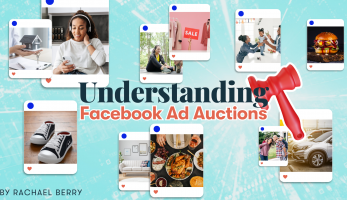Understand Facebook’s Advertising Policies
Facebook’s advertising policies are designed to create a safe and positive experience for users while ensuring that advertisers maintain ethical standards and comply with legal requirements.
Understanding these policies is crucial for creating successful ad campaigns that won’t face rejection, suspension, or other repercussions.
Let’s explore the key aspects of Facebook’s advertising policies, including prohibited content, restricted industries, and the principles behind their guidelines, along with examples of common violations and their repercussions:
Prohibited Content
Facebook strictly prohibits certain types of content from being used in ads. These include but are not limited to:
a. Misleading Content: Ads that contain false or misleading information, including deceptive claims, exaggerated promises, or fake news.
b. Illegal Products or Services: Ads promoting illegal substances, counterfeit goods, or services that violate laws and regulations.
c. Discriminatory Content: Ads that discriminate based on race, ethnicity, religion, gender, sexual orientation, or any other protected characteristic.
d. Adult Content: Ads containing explicit sexual content, adult products, or sexually suggestive materials.
e. Shocking or Sensational Content: Ads with graphic or shocking imagery that may be distressing to users.
f. Controversial Topics: Ads that exploit sensitive or controversial issues for commercial gain.
Example Violation: An ad claiming a weight loss product can make you lose 50 pounds in a week. This violates Facebook’s policy against misleading content.
Repercussions: Such ads are likely to be disapproved, and repeated violations may lead to the suspension of the advertiser’s account.
Restricted Industries
Certain industries and products have additional restrictions due to their potential impact on user safety or well-being. These include:
a. Health and Pharmaceuticals: Ads for pharmaceuticals, supplements, and medical treatments are subject to stringent regulations to prevent false claims or potential harm.
b. Financial Products and Services: Ads related to loans, credit cards, and financial services must adhere to legal and regulatory requirements.
c. Political Ads: Political advertisements must comply with Facebook’s political advertising rules and disclose funding sources.
d. Gambling and Gaming: Ads for gambling, lotteries, online casinos, and games with real-money prizes have specific guidelines.
Example Violation: An ad promoting an unapproved dietary supplement claiming to cure serious medical conditions.
Repercussions: Violating restrictions on certain industries may result in ad disapproval, account suspension, or limited ad delivery in those specific categories.
Principles Behind Guidelines
Facebook’s advertising policies are guided by several principles, aimed at maintaining a positive user experience and promoting transparency. Some of these principles include:
a. Authenticity: Ads must represent real products, services, and businesses, providing users with accurate and honest information.
b. Safety: Ads should not endanger the physical or mental well-being of users and should adhere to safety standards.
c. Privacy: Advertisers must respect users’ privacy and comply with Facebook’s data policies.
d. Community Standards: Ads must adhere to Facebook’s community standards, promoting respectful and positive interactions.
Example Violation: An ad for a dating app includes explicit and offensive language.
Repercussions: Ads that violate these principles may be rejected, and advertisers may face penalties such as ad restrictions or account suspension.
Choosing the Right Ad Format
Facebook offers a variety of ad formats that cater to different marketing objectives and target audiences making it essential to align the ad format with your campaign goals and ensure that the content complies with Facebook’s advertising policies.
The different ad formats you can use are:
⦁ Image Ads – Image ads are simple and effective. They consist of a single image with a limited text overlay.
⦁ Video Ads – Video ads offer engaging content and can capture users’ attention effectively.
⦁ Carousel Ads – Carousel ads allow you to showcase multiple images or videos within a single ad unit.
⦁ Slideshow Ads – Slideshow ads are a lightweight alternative to video ads, created using a series of images.
⦁ Collection Ads – Collection ads are designed to showcase a collection of products or experiences.
⦁ Lead Generation Ads – Lead gen ads allow users to submit their information without leaving Facebook.
⦁ Messenger Ads – Messenger ads allow you to reach users within the Facebook Messenger app.
⦁ Dynamic Ads – Dynamic ads automatically promote relevant products to users based on their interests and behaviour.
⦁ Sponsored Messages – Sponsored messages are used in Messenger to re-engage with users who have interacted with your business before.
By following these guidelines and using the appropriate ad formats, you can create successful Facebook ad campaigns that resonate with your audience while maintaining compliance with Facebook’s policies.
Crafting Ad Content with Care
Creating compelling and compliant ad copy and visuals is essential for successful Facebook ad campaigns.
To ensure your ads effectively engage your target audience and adhere to Facebook’s advertising policies, consider the following tips:
Know Your Audience
Understand your target audience’s preferences, pain points, and interests.
Tailor your ad copy and visuals to resonate with them, addressing their needs and offering solutions.
Use Clear and Concise Language
Craft ad copy that communicates your message clearly and concisely.
Avoid jargon or overly complex language that may confuse or alienate your audience.
Highlight Unique Selling Points (USPs)
Showcase the key benefits and USPs of your product or service.
Explain why your offering stands out from competitors and how it can solve your audience’s problems.
Avoid Misleading Claims
Be honest and transparent in your ad copy.
Avoid exaggerations or making unsupported claims about your product or service.
Misleading language can lead to ad disapproval and damage your brand’s reputation.
Focus on Value
Emphasize the value your product or service brings to customers.
Use language that highlights the benefits and positive outcomes of using your offering.
Use High-Quality Images
Visuals play a crucial role in capturing attention.
Choose high-resolution images that are relevant to your ad’s message and align with your brand identity.
Maintain Consistency
Ensure that the ad copy and visuals are consistent with your brand’s tone and style.
Consistency builds brand recognition and trust with your audience.
Follow Facebook ads 20% Text Rule
If you include text overlay on your images, adhere to Facebook’s 20% text rule, where text should cover no more than 20% of the image area.
Showcase Real People and Products
Whenever possible, use images of real people using your products or services.
This creates authenticity and helps users envision themselves benefiting from your offerings.
Test and Iterate
A/B test different ad copy variations and visuals to identify what resonates best with your audience.
Continuously analyse performance metrics and refine your ads accordingly.
Avoid Prohibited Content
Ensure your visuals and ad copy comply with Facebook’s advertising policies.
Avoid using explicit content, adult material, discriminatory language, or any other prohibited content.
Targeting the Right Audience
Facebook offers a wide range of powerful targeting options that allow advertisers to reach their ideal audience with precision.
You can target by demographic such as age and gender, location, interests, and behaviours. And if none of those are right for you, you can create a custom target audience based on existing customer data.

By understanding and utilizing these targeting options effectively, advertisers can ensure their ads reach the right people, maximizing the impact of their campaigns.
However, it is essential to ensure that your targeting parameters align with Facebook’s policies to maintain compliance and avoid potential issues.
Ad Review and Approval Process
The ad review process on Facebook is an essential step to ensure that ads comply with the platform’s advertising policies and community standards.
Facebook employs a combination of automated systems and human review to assess ad content.
These stages are:
Ad Submission
Advertisers create their ads and submit them for review through Facebook’s Ads Manager or Business Manager.
The review process typically begins immediately after the ad submission.
Automated Review
Facebook’s automated systems use machine learning algorithms to quickly scan ads for potential policy violations.
These algorithms analyse ad content, including text, images, and links, to identify any apparent violations.
Human Review
If the automated system detects a potential policy violation or if the ad requires further evaluation, it goes through a human review process.
Trained reviewers assess the ad’s compliance with Facebook’s advertising policies, community standards, and other guidelines.
If your ad gets disapproved, don’t panic.
You can take the following steps to address the issue.
Review Feedback
Check the disapproval reason provided by Facebook, which is usually available in the Ads Manager. Understand why the ad was rejected.
Make Necessary Changes: Revise the ad content to address the issues flagged by Facebook’s review team. Ensure compliance with policies and guidelines.
Resubmit for Review
Once you’ve made the necessary changes, resubmit the ad for review. This restarts the review process, and Facebook will reassess the revised ad.
Be Patient
Sometimes, the review process might take longer due to high submission volumes.
Be patient and allow Facebook sufficient time to re-evaluate your ad.
Dealing with Policy Violations
If your ad is disapproved or your account faces policy violations on Facebook, it’s essential to take prompt action to address the issue and ensure compliance with Facebook’s advertising policies.
Here are the steps you can take if your ad is disapproved or your account encounters policy violations.
Review the Disapproval Reason
When your ad is disapproved, Facebook typically provides a reason for the rejection in the Ads Manager.
Carefully review the reason to understand why the ad was flagged for non-compliance.
Address the Issue
Once you identify the reason for the disapproval, make the necessary changes to the ad content to comply with Facebook’s advertising policies.
Ensure you rectify any issues related to prohibited content, misleading claims, or any other policy violation.
Resubmit for Review
After making the required changes, resubmit the ad for review.
In the Ads Manager, you will see the option to edit the ad. Once you’ve made the changes, click on “Submit for Review” to initiate the review process again.
Be Patient
Facebook’s review process can take some time, especially if there is a high volume of ad submissions.
Be patient and allow Facebook enough time to reassess your revised ad.
Monitor the Ad Status
Keep a close eye on the ad status in the Ads Manager.
If the ad is approved after the review, it will start running. However, if the ad is disapproved again, you may need to re-evaluate and further modify the content.
Appeal Process (Optional):
If you believe that your ad was incorrectly disapproved or flagged for a policy violation, you have the option to appeal Facebook’s decision.
In the Ads Manager, you can find an appeal button next to the disapproved ad.
Click on “Appeal” and provide a clear explanation of why you believe the ad complies with Facebook’s policies. Include any supporting evidence, if applicable.
The appeal will be reviewed by Facebook’s team. If they find that the ad does indeed comply with the policies, they will approve it for running.
Be aware that the appeal process may take additional time, and there is no guarantee that the decision will be reversed.
By promptly addressing disapproved ads and taking steps to rectify potential issues, you can maintain a positive relationship with Facebook and ensure the success of your advertising campaigns on the platform.
Remember that policy compliance is crucial for long-term success on Facebook and protecting your ad account from potential penalties or suspensions.

Are you ready to embark on an exciting journey of creating impactful Facebook ads that comply with policies and deliver exceptional results?
Take action today!
Familiarize yourself with Facebook’s advertising policies, master the art of targeted ad creation, and deliver compelling content that captivates your audience.
Invest the time and effort in crafting meaningful campaigns that resonate with your customers, and don’t forget to regularly monitor and optimize your ads for better performance.
Stay up-to-date with policy changes and adapt your strategies accordingly.
Remember, by embracing compliance, creativity, and customer-centricity, you have the potential to unlock the limitless possibilities of Facebook advertising.
Start crafting your next successful ad campaign today!




